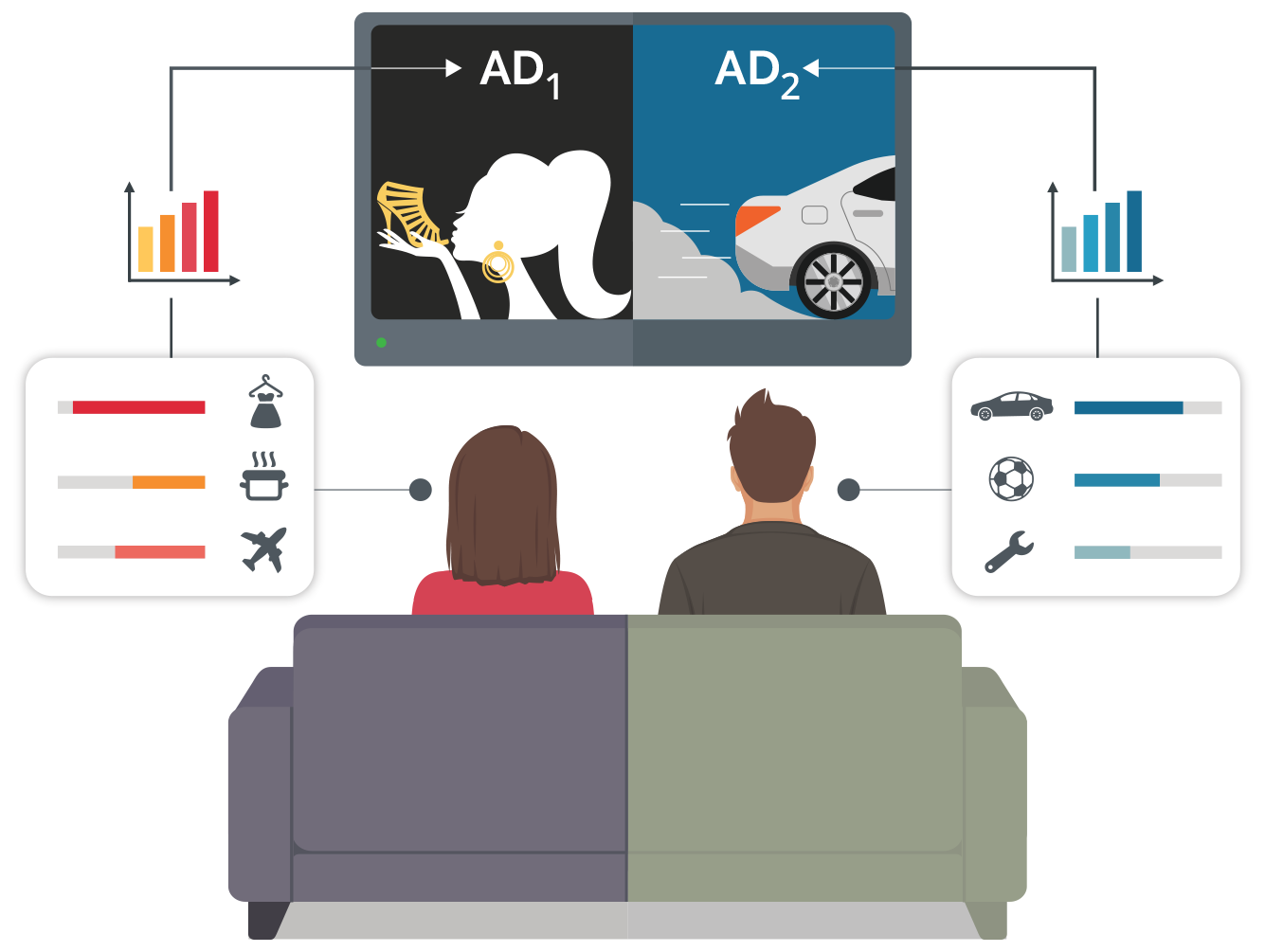Smart TVs as a “giant system of digital surveillance” that targets everyone, especially children
Calling it a “privacy nightmare,” the Center for Digital Democracy released a report on how the streaming TV industry has evolved into a vast data-driven surveillance apparatus that turns people’s televisions into monitoring, tracking and targeting devices.

The streaming television industry has evolved into a vast data-driven viewer surveillance apparatus, turning people’s televisions into tools for surveillance, tracking and targeting, according to a report from the nonprofit Center for Digital Democracy.
The 48-page report, titled How TV Watches Us: Commercial Surveillance in the Streaming Era, charts the evolution from broadcast, cable and satellite television to connected TV (CTV), a term that encompasses the wide range of content delivered to smart TVs over the Internet.
CTV includes popular apps like YouTube TV, FAST (Free Advertiser-Supported TV) channels, and streaming services like Disney+, Netflix, and Amazon Prime. It also includes Roku, and smart TV devices themselves.
The report documents how CTV, whose growing viewership is driven primarily by young viewers, collects user data through a “sophisticated and far-reaching commercial surveillance system” that privacy advocates say undermines existing consumer protections.
“CTV has become a privacy nightmare for viewers,” said Jeff Chester, co-author of the report and executive director of the Center for Digital Democracy, in a press statement. “It is now a centerpiece of the vast system of digital surveillance that shapes most of our online experiences, as it collects and uses sensitive data about health, children, race and political interests.”
Over the past five years, CTV companies have partnered with data brokers like Experian and TransUnion to develop new data mining tools that capture and aggregate everything a single user does on their smart TV. This information can be combined with data from other devices and real-world activity.
Existing privacy policies do not explain or protect people from these new forms of data collection, according to the Center for Digital Democracy – so viewers should ignore any promises made by companies not to collect or share user data.
These new data collection practices lay the foundation for a system with “unprecedented opportunities for surveillance and manipulation,” the report warns. “Buying a smart TV in today’s connected TV market is therefore tantamount to bringing a digital Trojan horse into your home.”
The Center for Digital Democracy submitted the report along with letters to the Federal Trade Commission, the Federal Communications Commission, the Attorney General of California and the California Privacy Protection Agency calling for an investigation into the industry.
How does CTV collect data?
According to the report, CTV saw a dramatic increase in viewership during the covid lockdowns, “as hundreds of millions of Americans forced to stay home found solace and distraction in the vast number of channels offering a steady supply of movies, TV series, sports and other programming.”
The trend has continued: streaming services are expanding their audiences by offering lower-cost versions of their platforms that include advertising. These ad-containing versions are more profitable and offer more opportunities for data collection and ad targeting.
Through CTV partnerships, data brokers create extensive digital dossiers on hundreds of millions of individual viewers and TV owners based on their identity information, viewing habits, and online and offline shopping and other behaviors.
A new data mining tool is a “cookieless ID” that tracks a person’s digital activities without third-party cookies, capturing user data directly and without the viewer’s knowledge or the opportunity to opt out.
Another method, ID graphs, aggregates user data from all of a person’s device logins and even real-world activities, enabling targeted advertising both online and offline.
Automatic Content Recognition (ACR) software, an artificial intelligence (AI) tool, captures every frame of content displayed on a TV and creates a digital fingerprint. This content, which is associated with each household and takes into account their location, subscription history, gaming behavior, type of content, etc., is then used by advertisers to control everything from the TV’s home screen to the ads viewers see.
In this new environment, even TV manufacturers are collecting first-party data – data that comes directly from users. In many cases, users need to consent to this data collection when setting up the TV. Software installed on the TV tracks and analyzes the content and advertising that appears on the screen.
While the manufacturers say the data is anonymized, the report says the thousands of categories used for “precise audience targeting” reveal a vast, highly detailed and intimate amount of information that, when combined with modern identity technologies, enables individual viewer tracking and advertising targeting.
This targeting goes beyond product advertising – it is also used to manipulate people’s financial, political and health decisions, the report said.

How CTV manipulates and evaluates consumers’ health data
The United States is one of two countries in the world that allows pharmaceutical companies to advertise directly to consumers. Research has shown that advertising significantly increases drug sales, although it is often biased, uses misleading language and omits important health information.
According to the Center for Digital Democracy report, pharmaceutical marketers use extensive data about people, including diagnosis and procedure codes, medical claims and prescribing habits.
CTV has opened up opportunities for the industry to become “even more powerful and intrusive” by combining existing health data with targeted pharmaceutical advertising and then tracking their effectiveness to further refine targeting methods.
Despite claims that health data is anonymized for targeted advertising, the report says the industry may use other identity tracking tools to serve pharmaceutical advertisements to specific people on their smart TVs.
For example, a company called DeepIntent is working with LG to gain exclusive access to its automatic content recognition data. The company can combine this data with other data points to target people with pharmaceutical advertisements that are relevant to their health issues.
DeepIntent is also working with Roku to target “silver streamers,” people age 55 and older who are more likely to have a diagnosed medical condition.
The companies target patients, caregivers and providers with persistent and repeated ads across multiple platforms.
Food manufacturers use AI to target children and collect data from them
Food and beverage manufacturers are using AI to reach children and young people who belong to the so-called “Generation Stream”.
Companies like General Mills are partnering with Netflix, Disney+ and Prime Video to integrate their products into shows that resonate with their target audience. Big Food’s interest in this type of integration has spawned companies like BenLabs, whose sole purpose is to integrate brands into TV, film, music and influencer content.
CTV is also using generative AI to show different ads to different segments of viewers watching the same show. Startup companies are developing technology to place different products in the same show for different audiences.
“Where one customer sees a Coca-Cola on the table,” the report says, quoting a marketing executive, “another sees green tea. Where one customer sees a bag of chips, another sees a granola bar, in exactly the same scene.”
Companies like Amazon share their search and purchase data with the food and beverage industry, allowing brands to further refine their targeting.
For example, Hershey, an Amazon partner, has used the data to ensure that its products always “win” in Amazon searches and has placed its products in Amazon shows.
Roku has partnered with Kroger to integrate data collected in-store and on viewing habits so brands can target supermarket shoppers while they watch CTV. The platform also provides advertisers with data to measure how exposure to streaming ads impacts real-world purchases.
Children and adolescents represent a $28 billion market
According to the report, children and teens represent a market worth over $28 billion for purchases of food, toys, entertainment and technology. They also play a major role in deciding what families stream and which streaming services they subscribe to.
While Disney claims it doesn’t advertise to children, it does collect data about them that it shares with marketers. For example, the company coordinated a project in which children shared their “video ethnographies” about their favorite activities, which were published in a report.
Streaming channels also recycle popular content such as “SpongeBob,” “Dora the Explorer” and “Peppa Pig” on channels with streaming advertising.
CTV programming aimed at young people is facing a transformation due to generative AI, which can be used to easily create animations and personalized advertising, as well as produce content tailored to children faster and more cost-effectively than ever before.
As this new media landscape evolves, the Center for Digital Democracy calls for a comprehensive policy agenda to protect consumers and strengthen democracy. This agenda should include privacy protections and safeguards for digital marketing in the areas of health, children and politics.
“Introducing policies for connected TV will not be easy,” the report concludes, “especially after decades of allowing the online industry to operate and grow unhindered and unchecked. The systems and relationships that enable continuous data collection and use are deeply entrenched.”
Author: Brenda Baletti, Ph.D.
yogaesoteric
October 20, 2024
